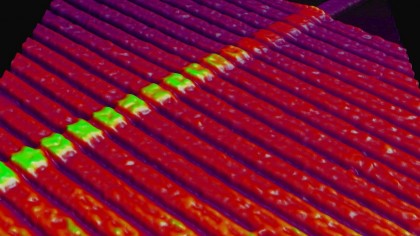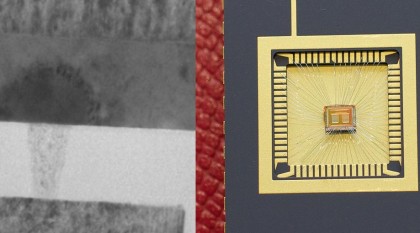How universal memory will replace DRAM, flash and SSDs
Next-gen memory will change the way your OS works
Those are issues both the operating system and application designers will need to take into account, says Shepler. "We have to learn how to manage persistent memory for security, and how to manage it efficiently for users when they're trying to move information between systems and work out how to reconstruct that. There will be management and manageability tradeoffs that come with this new technology."
Next-generation memory contenders
Memristors store information by 'remembering' what resistance they were last set to (hence the name). HP is working on a memristor that makes ionised tantalum oxide expand or contract by applying a voltage; when the power turns off, it stays in place so you can read back whether it's expanded or contracted. That's a one or a zero in binary. Rambus, Panasonic and Crossbar are all working on resistive RAM technologies that may work in much the same way as memristors but using different materials.

When you put a voltage through the top wire of a memristor it changes the electrical resistance of the layers, and that's how you store a bit of data
HP says when it starts shipping memristor storage, it will be faster than flash but initially slower than DRAM - but that it will get to RAM-like speeds in time.
Spin transfer torque memory has two tiny magnets; one that's fixed and the other that spins when you apply a current; when you apply just the right current, the magnet spins to store a one or a zero.
Other contenders are closer to the speed of flash. IBM is working on phase change memory that stores information on glass made out of germanium, antimony and tellurium, which can change between being a glass and a crystal and back when you heat and cool it; again, the different phases correspond to ones and zeroes in binary. Nano-RAM uses the same idea but with a mesh of carbon nanotubes that can touch or be pushed apart by applying a current, while Magnetic Tunnel Junction memory spins polarised electrons back and forth, and Binary Oxide Filament cells create and destroy filaments to make connections.

There's some pretty advanced chemistry involved in all of these, and it's not out of the lab in many cases.
Are you a pro? Subscribe to our newsletter
Sign up to the TechRadar Pro newsletter to get all the top news, opinion, features and guidance your business needs to succeed!
HP is cagey on dates, but HP Labs director Martin Fink has suggested 2018. Crossbar is hoping to get what it calls RRAM to market even sooner, around 2015, although even optimistic experts like Bob Beauchamp of EMC don't expect to see successful next-generation memory for three to five years. Phase change and spin transfer torque memory are available in small sizes today but they're still expensive to make.
It's likely that flash and DRAM and even spinning hard drives will stick around for years; they're cheap and we know how to work with them. But if someone gets next-generation memory working, devices that use it will need operating systems and apps that handle memory and files and storage very differently.
- Now why not read Thanks for the memory: the story of storage
Mary (Twitter, Google+, website) started her career at Future Publishing, saw the AOL meltdown first hand the first time around when she ran the AOL UK computing channel, and she's been a freelance tech writer for over a decade. She's used every version of Windows and Office released, and every smartphone too, but she's still looking for the perfect tablet. Yes, she really does have USB earrings.